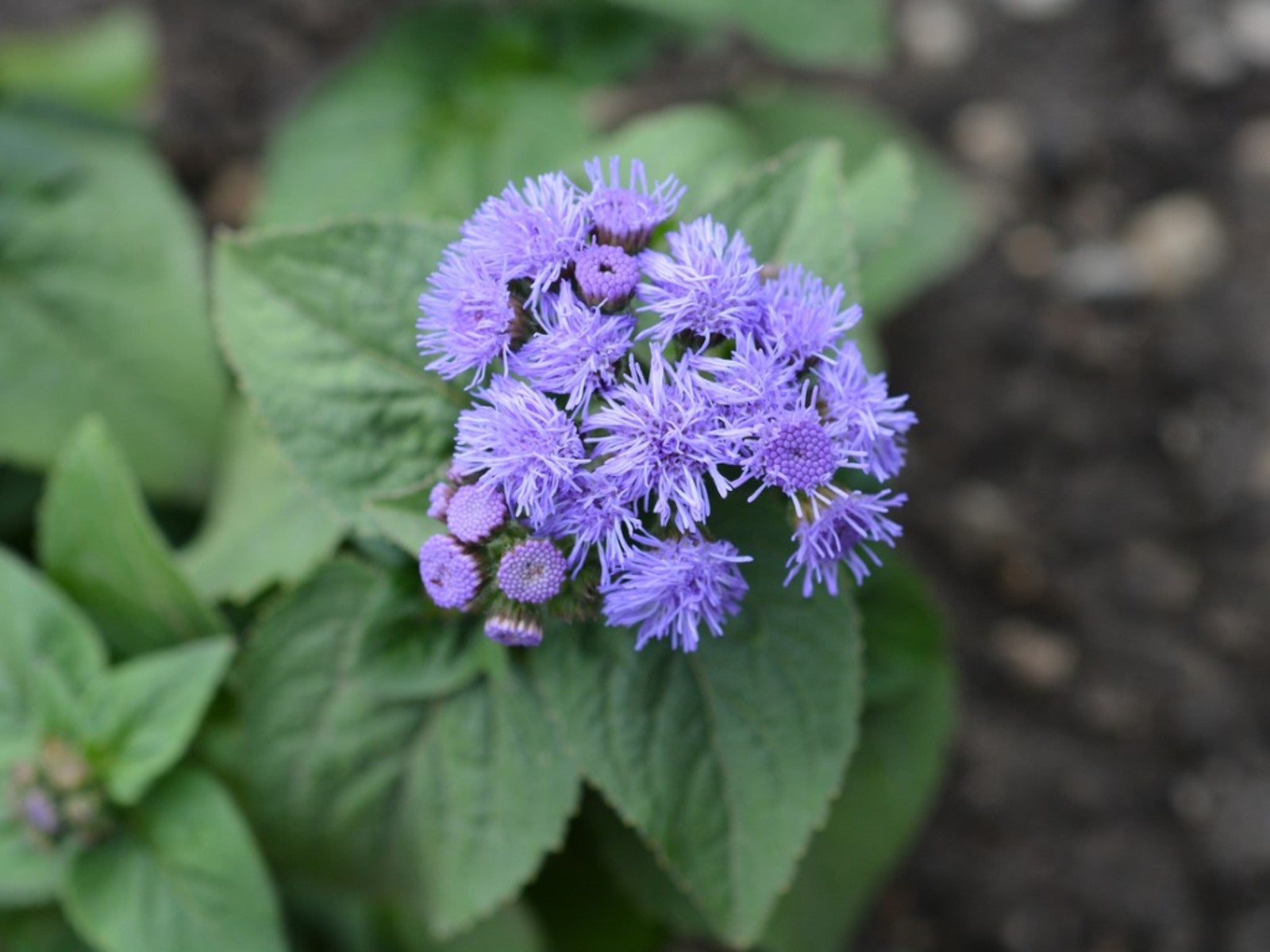Popular Ageratum Varieties – Learn About Different Types Of Ageratum Plant


With blooms that begin in late spring and last until autumn, you’ll find types of ageratum varieties that are perfect for your beds and borders.
The fluffy powder-puff flowerheads grow in shades of pink, purple, blue, and white and may reach 24 to 30 inches (60 to 76 cm.) in height.
These taller floss flowers like "Blue Horizon" and "Red Top" bloom in the colors red and blue, and can add a patriotic display for 4th of July when combined with the shorter white flowering types of the plant. Taller ones are of the Ageratum Houstonianum type.
Shorter types of this annual flower find a useful place in container gardens, and all heights should grow in your summer cutting garden.
Dwarf varieties of ageratum are tiny types like “Blue Surf" and "Royal Delft”. A few inches taller, compact varieties are 6 to 9 inches (15 to 23 cm.), like “Swing Pink," "Summer Snow" and "Pink Improved."
Soften a border with these colorful, long-lasting types of ageratum. Blue types are favorites, as true-blue flowers are sometimes difficult to find for planting in the garden.
Companion Ideas for Different Ageratum Plants
Feathertop Pennisetum villocum, a grass with feathery blooms atop arching stems combines well with Blue Ageratum types. Add summer blooming dahlias to this mix for textured borders with a variety of colors popping through. Thyme and the relatively new Osteospermum make great companions too.
Sign up for the Gardening Know How newsletter today and receive a free copy of our e-book "How to Grow Delicious Tomatoes".
The old-fashioned ageratum blooms quickly and profusely and is one of those plants known to “bury their dead,” meaning flowers develop so quickly there is no need to remove them as they die off. However, deadheading the flowers can encourage new blooms to appear more quickly, so the choice is yours.
Ageratum can take part shade in the garden and prefers it during summer heat. This allows more effective companion plantings, such as a part of a pollinator garden.
Agastache ‘Black Adder’ can be included in this planting, along with Yarrow, bee balm, Basil, dill and marigolds. Many other blooms attract bees, butterflies, and other pollinators, so do your research if you wish to plant these in your landscape with ageratums.
Caring for Ageratum
These showy blooms are a wonderful addition to many types of gardens and locations. Caring for them is simple as well. Plant seeds or small plants in rich, well-draining soil and water regularly. These plants wilt if they are not watered often enough. Don’t water overhead, but at the roots. Plant them so all types get good air circulation.
Note: Don't confuse annual ageratum with perennial ageratum (Eupatorium coelestinum).

Becca Badgett was a regular contributor to Gardening Know How for ten years. Co-author of the book How to Grow an EMERGENCY Garden, Becca specializes in succulent and cactus gardening.